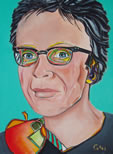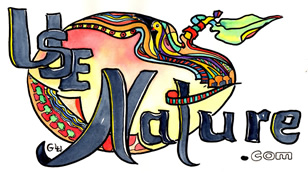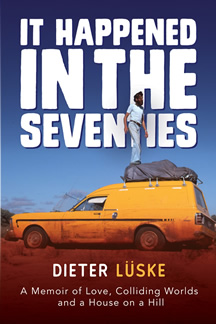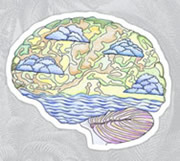useNature.com ... Holistic Health - Emotional Choice Counselling - Anchoring Emotions
Anchoring Emotions
EMOTIONS AND THEIR FUNCTIONS
Lifestyle Online Magazine - Holistic Health Information
Article: Emotional Choice - Anchoring Emotions

Article extracted from a workshop & book called:
DO YOU BELIEVE IN YOU - by Dieter Luske© - Gold Coast
... all following articles, are written as workshop manuscript
... questions were asked to stimulate active participation.
ARTICLE NUMBER - 25 - Chapter Three
EMOTIONS AND THEIR FUNCTION
Anchoring Emotions - Keeping an Emotion
NLP Anchoring Technique - ... and the concept of Association and Dis-association (Dissociation)
HOW TO KEEP AN EMOTION OR BEHAVIOUR YOU WANT
I have used the word association quite freely. Now I am going to use it more specifically and link it together with a new term, the anchor or anchoring.
An anchor is a symbolic expression to explain what happens if we react to an external stimulus with an emotion, feeling or memory. We simply say, that at any time you had a profound experience of any description, the circumstances around that experience would be anchored into your memory, or your sub-conscious mind.
In other words, from that time on, depending on the depth of that initial experience, you either consciously or subconsciously will always associate (remember) the circumstances of that experience with that specific emotion. ( your memory is linked to your senses)
As we said before, everything works both ways, in this case, if we quasi-accidentally create an anchor by an experience, then:
WE CAN CREATE AN ANCHOR AT WILL
If you go back a little, and read again how to trigger a certain emotion, then you would realise that everything is based on an anchor. You basically have to have an anchor first to be able to use it to trigger an emotion. This means that you had an experience, which was anchored into your memory of the subconscious mind and the conscious mind which then could re-activate a certain emotion. You also would have noticed that this is not the case with fantasy and this brings us to the technique of anchoring.
Basically, we could say that we can anchor an experience artificially.
We can do this in two ways.
Before we go in depth into those two ways, let's play a little bit with your memory for you to truly appreciate the term anchoring. There are a few universal anchors we all have, so here is the chance for you to test your anchors.
Go back in your memory to your school days.
Sit in the chair you used to sit in, see the other kids around you, even hear those familiar sounds of your school class, (you may even smell the scent of your class room). Now look up to the blackboard, your teacher is not in class yet, and some joker is standing right now at the blackboard and with his long fingernails, slowly ........ scrapes .. down ... the .. blackboard.
If you feel anything right now, (maybe only for a split second), you will know what an anchor is. Most people have an aversion to nails scraping down the blackboard. The strength of the feeling it has triggered in you, depends on how intense you were visualising that particular scene.
If you did a good job, than you were fully associated with that scene. This means, that you were actually 'there'. In remembering that scene, you didn't see yourself as in a video, you only saw what was around you. You were associated with yourself.
The opposite side is dissociated, which means that you saw yourself as in a video or movie, like an actor.
Being dis-associated - dissociated from yourself in a memory means, standing outside yourself watching yourself, therefore not being in touch with yourself and your emotions.
This concept of association and dissociation is very important and has many applications.
For the moment, I would like to concentrate on using it with anchoring an emotion. Understanding the above explanation means that if you are associated with yourself, you can recover a full emotional experience.
Being dissociated means you are just looking at yourself and consequently you have only a limited recovery of the original experience.
In simple words, the further you are 'standing away' from yourself, the less you will feel your emotions. Having lectured many times on this subject, makes me appreciate how hard it is for some people to understand what I mean.
For people who are not greatly aware of visualising, (some people use more of their auditory or kinaesthetic senses), it is obviously a new concept to be able to see yourself in your mind quite clearly (dissociated) and even to see yourself and then step into your body (associated) and see only your surroundings, as in reality.
Some people visualise exceptionally easily, but only in an associated way, hence are never able to see themselves in their minds eye. Other people experience visualisation only in a dissociated fashion. The latter would be pretty flat with emotional responses. The former may be emotionally over-reactive.
The point I am making is that if you want to trigger a strong emotion, then it has to be with an association, to make it as real as possible.
If you are a person who can visualise easily or if it simply comes naturally to you, then you probably have discovered already that with some memories you see yourself as in a video (dissociated) and with other memories you are totally involved, as if you are right there, seeing only what is around you (associated). Knowing this, you could use this concept for coming to terms with a lot of your emotions and memories.
If you are stricken with grief and the memories are too painful for you at the time, then dissociating yourself from your memories will make coping easier. In a way, you see it from a different perspective, a third party perspective. In other words, memories you have of the deceased will appear to you in your memory with you playing a role, as in a video. You can dissociate yourself even further, by watching yourself watching a video. This would be a double dissociation.
The more emotionally affected you are, the more you could stand away from yourself, until you come to a position where you can look comfortably at the 'video' you are seeing, as if seeing somebody else. Evaluating seeing such a dissociated video of yourself, would greatly enhance your ability to look at yourself and the situation more objectively.
This technique could then be used generally to have a good look at yourself, your life, your behaviour and your actions to evaluate whether you are walking in the right direction. You will have noticed many times in life that it is much easier to look at another person and know what he or she needs to do.
This is when you know, how to put yourself in the shoes of an observer, and of others.
Coming back to anchoring, the stronger the anchor and the association, the stronger the emotional response you will get.
For some emotions you may even have to repeat the anchor a few times.
A stronger technique would be to stack one anchor on top of another.
Some phobias and anxieties are a negative form of a very strong anchor. In that case, the initial learning experience was dramatically strong. If this anchor is strengthened inadvertently by remembering an associated memory of that dramatic experience, (like an negative video of your associated self), then the consequence will be a full blown phobia or anxiety.
next .... I am sure you would like to know of how to anchor?
... read Article 26 - click > the Anchoring Techniques
Article provided by the Editor - Dieter L.
Excerpt from a workshop & book - published 1993 - titled; "Do you believe in You"
www.usenature.com - Dieter Luske ©
or go back to the Article Menu > Self Help Article Menu

Dieter Luske- Editor
Buy Now
It happened in the seventies
A Memoir of Love, Colliding Worlds and a House on a Hill
Intriguing story of personal risk-taking, self-discovery and profound change.
Dieter Luske
author . writer . editor


